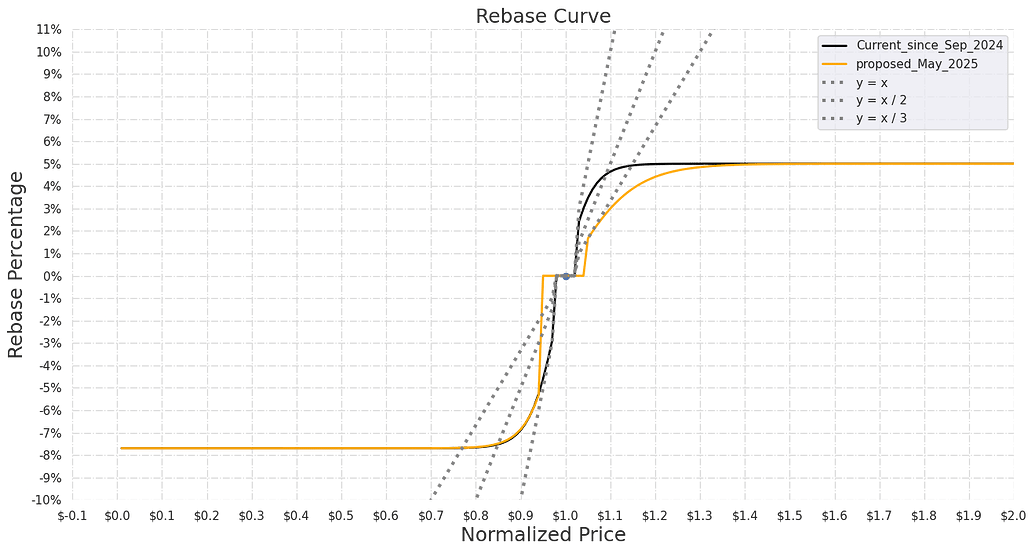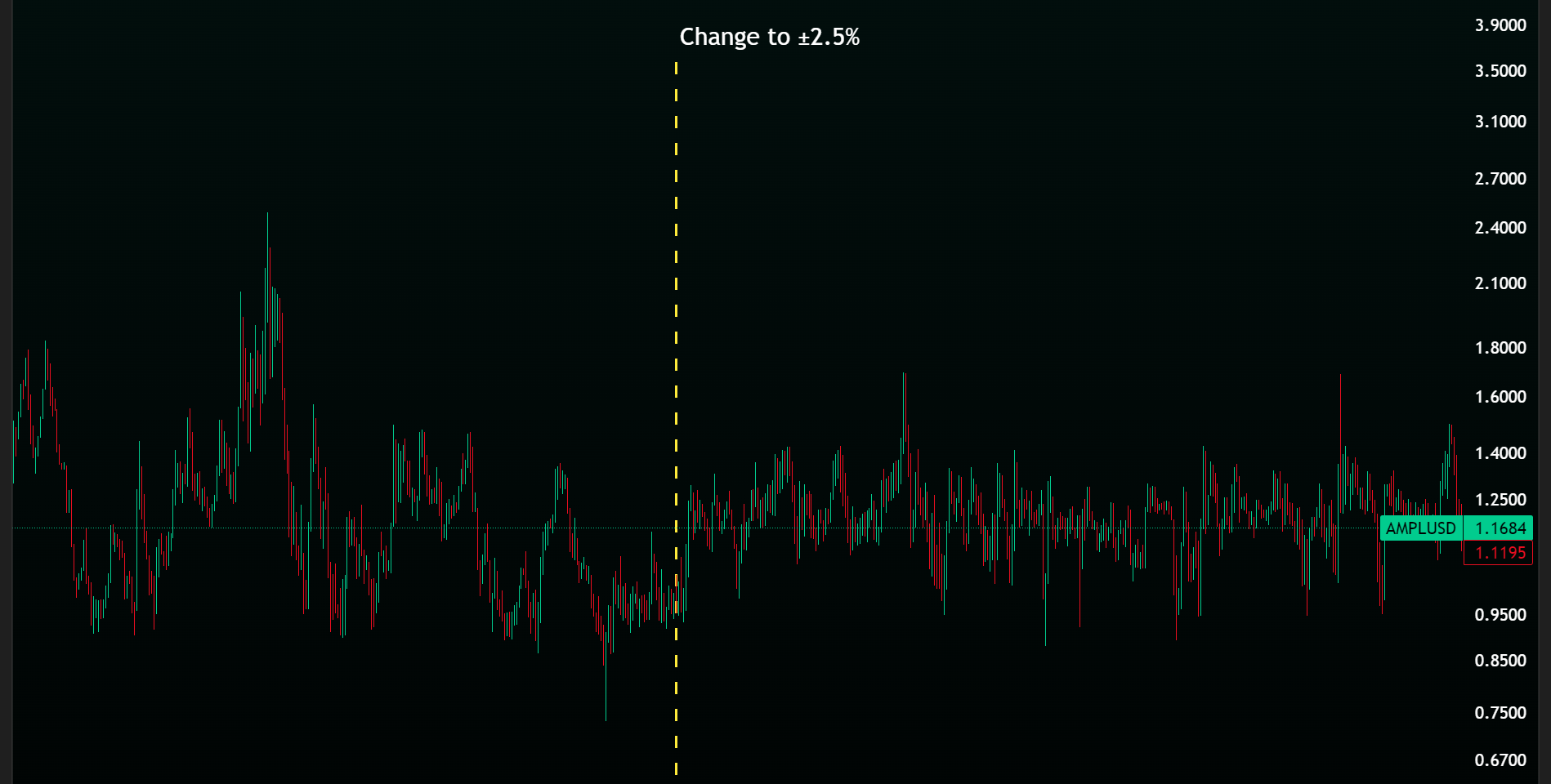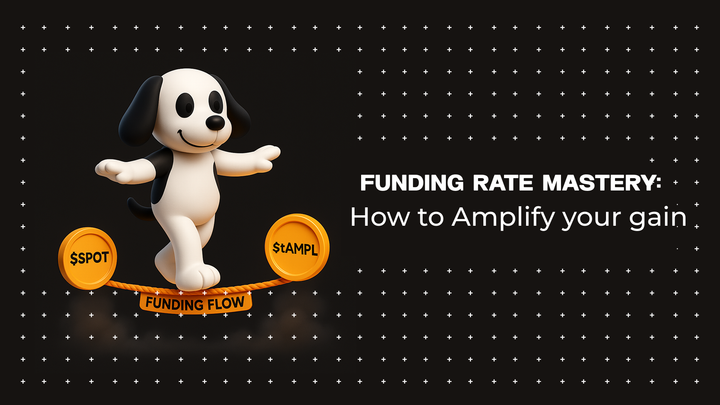Ampleforth (AMPL) Rebase Upgrade 2025
The DAO approved an upgrade that gives separate steepness controls for positive vs. negative rebases and restores the deviation threshold back to its original ±5%

TL;DR: Recently, FORTH DAO approved an upgrade that gives separate steepness controls for positive vs. negative rebases and restores the deviation threshold back to its original ±5%. The changes should bring gentler, more selective positive rebases, decisive negative rebases when demand falls, and fewer false triggers (overshooting) overall. The average length of positive rebase cycles should also extend materially closer to its historical average of 12.6 days (with a deviation threshold of ±5%).
What Changed?
Ampleforth’s rebase protocol now uses asymmetric sigmoid parameters, exposing independent responsiveness (growth/steepness) for the positive and negative sides of the curve. The rebase change lets policy keep negative corrections sharp while smoothing expansions.
The neutral band was restored to ±5%, reversing the 2024 change in a September 2024 proposal that had narrowed it to ±2.5%. There is no change to the fundamental model: AMPL still uses the sigmoid curve introduced originally by AIP‑5. The update simply applies different slopes per side and widens the neutrality zone. The governance proposal, “Separate Positive and Negative Curves and their Parameters,” passed and is recorded on Tally.
AIP‑5 replaced the old linear rule with a bounded sigmoid to minimize error around the target. In Proposal #32 (Sept 2024) the curve was steepened and the neutral band narrowed to ±2.5%, compressing cycles and increasing rebase frequency by reacting to smaller deviations. That setup worked for fast downside corrections but made positive rebases too quick, often followed by a compensating negative rebase (i.e. overshoot). The new policy aims to keep negative rebases quick while smoothing the upside to lengthen the time spent positive rebasing.

Expected Market Mechanics
1) Longer Positive Cycles
- With a smoother positive curve and ±5% neutral band, many small price upticks will no longer trigger expansions.
- When positive rebases do occur, they’ll likely stack over more days rather than spiking and snapping back.
2) Decisive Negative Cycles
- The negative side remains steep, preserving the protocol’s ability to clear excess supply quickly during contractions.
3) Fewer Rebases Overall
- Returning to ±5% filters out “micro-mean‑reversions.”
Implications
For AMPL holders, the upgrade should create a smoother wealth path in uptrends by reducing overshoot risk and cutting nuisance rebases from otherwise normal market activity. When demand is truly sustained, expansions should run longer and steadier.
For stAMPL/SPOT participants, arbitrage cadence will likely shift toward fewer but higher-confidence positive windows, while supply contractions in down-moves remain decisive (quick hitting). There should be fewer back-to-back over-corrections, meaning basis and hedge management should get easier.
For LPs and market makers, lower rebase changes means less whiplash and more opportunities that concentrate around clearer, structural moves rather than noise like before.
Overall, the upgrade re-centers AMPL back around meaningful market moves, but should still retain the quick negative rebase cycles like during the ±2.5% deviation threshold. Having the ability to sustain positive cycles, especially during the emerging 2025 bull market, is important in the Ampleforth ecosystem attracting and retaining long-term growth.




